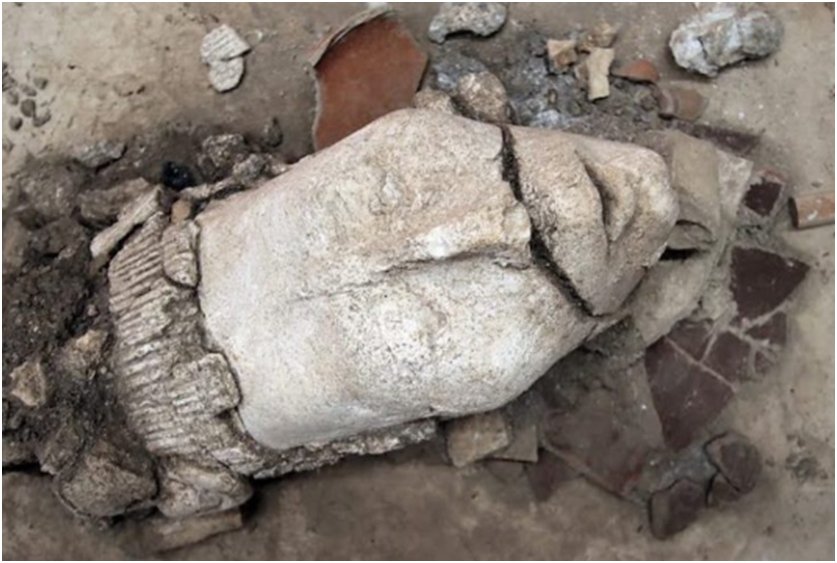Archaeologists unearth 1,300-year-old statue of Mayan God in Mexico
Archaeologists have unearthed an approximately 1,300-year-old statue representing the head of the Mayan god in southeast Mexico.
Archaeologists were excavating in the Mayan city-state of Palenque, near Mexico’s Chiapas Usumacinta River. The artefact found symbolizes the birth of the maize plant with the first rays of the sun. The work was placed in an east-west direction.
Originally thought to be just a head, the statue was placed on a tripod by the Mayans and placed in an east-west position to symbolize the rise of the corn plant with the first rays of the Sun.

Similar iconography has been found at sites in the Tikal region of the Late Period (600-850 AD) and Early Classical Period (150-600 AD), and in manuscripts in which the god appears with the head severed in Dresden and Madrid.
Also known as Lakamha (“Flat-Earth-River”) in Itza, Palenque is mostly known for having some of the best architecture, sculpture, roof scallops and bas-reliefs in the world of Maya civilization.
While removing the fill in a corridor connecting House B and House F in the palace complex, researchers uncovered a vessel with a severed plaster head in a small pond.
The teams believe that this setting was to mimic the entrance to the Maya underworld. Crews believe that this setting was to mimic the entrance to the Mayan civilization’s underworld.
The Mayan civilization believed that the universe was divided into the sky, earth, and the underworld. Venerated places such as caves and sinkholes served as a portal or gateway to Xibalba, an underground kingdom ruled by the Mayan death gods and their helpers.

“The statue was part of an offering placed over a pond in an aquatic environment that mimicked the god’s entrance to the underworld,” says the National Institute of Anthropology and History in a statement.
“This discovery allows us to better understand how the ancient Palenque Mayas relived the legendary transition of the birth, death, and resurrection of the Mayan god,” said Arnoldo Gonzaalez Cruz, INAH Chiapas Center researcher says.
Because the sculpture was found in damp conditions, it was put through a slow drying process before being restored.





